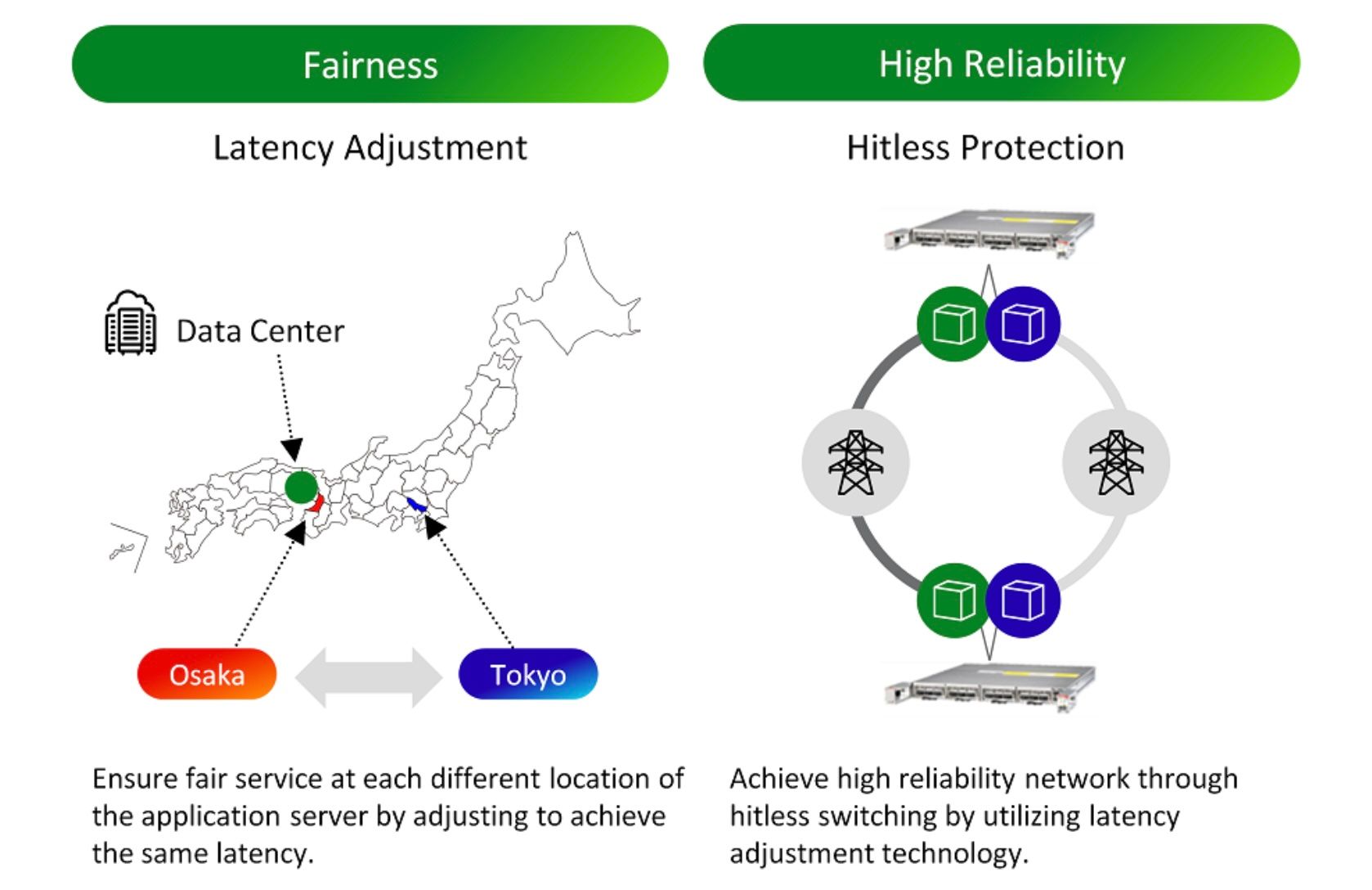
KAWASAKI, Japan, May 28, 2024 – (JCN Newswire via SeaPRwire.com) – Fujitsu today announced that it has developed FUJITSU Network 1FINITY T250, a disaggregation-type (1) optical transmission solution to achieve the IOWN (Innovative Optical and Wireless Network) initiative (2) and started sales on May 14, 2024. The new solution can easily upgrade the reliability of existing optical networks, thereby enabling the creation of new connectivity services for telecommunications carriers and broadcasting companies in new use cases such as telemedicine and remote construction.

1FINITY T250 is a solution that realizes All-Photonics Network (APN) (3), an end-to-end optical network with higher transmission capacity, lower latency, and lower energy consumption. It is equipped with latency adjustment technology that controls delays and enables hitless switching of paths (4) that connect nodes in optical transmission equipment.
Using 1FINITY T250 to configure a backup line, the risks of line failures caused by factors that are difficult to predict (including natural disasters and accidental equipment failures, and other external factors such as relocation of existing equipment due to road construction) can be eliminated while maintaining network services.. It will be possible to switch lines automatically and in a more stable manner without causing a line failure, making it possible to provide APN services more safely and securely.
By providing 1FINITY T250, Fujitsu will support the construction and social implementation of optical networks in fields such as telemedicine, remote robotics, and infrastructures such as power transmission network monitoring systems that require high reliability and low latency, as well as continue to contribute to the realization of highly reliable APNs based on the IOWN initiative, where users can enjoy high-quality services.
Background
Various use cases of optical transmission using APN are currently being considered to realize the IOWN initiative, for example, power transmission lines that utilizes optical ground wires (OPGW) (5). While this is economical and easier to maintain, it also carries the risk of signal errors because of the external environment effect such as lightning strikes and electromagnetic interference. Furthermore, even in conventional optical fiber networks, high reliability and low latency are constantly required for manipulation (6) in telemedicine and power transmission network monitoring systems because an accidental failure of network equipment can have a significant impact on services.
To solve these issues, Fujitsu has developed 1FINITY T250, an optical transmission solution equipped with Fujitsu’s own latency adjustment technology that visualizes and controls network delays and fluctuations and enables hitless switching of paths between optical transmission equipment nodes.
Features of Fujitsu Network 1FINITY T2501. Latency adjustment technology maintains high-quality network connections even during failures
1FINITY T250 measures the end-to-end delay of each path connecting nodes of optical transmission equipment and controls the amount of delay so that the delay difference between each path is zero, thereby making the latency (response time) of the entire network consistent. This eliminates the time lag caused by geographical factors in use cases such as remote concerts and game matches between remote locations and ensures fairness.
By applying this latency adjustment technology, for example, in the event of a line failure, it is possible to instantly switch to a backup line, thereby preventing momentary line interruptions and maintaining high-quality network lines.
2. Visualization and control of delays in optical networks
The delay time between optical network sites is measured and outputs it as a log. This allows the path delay time to be controlled in 1 microsecond increments based on the measurement results.
3. Can be added to existing transponders (7) that transmit and receive optical signals
It has a 1RU (8) chassis size that is designed for open network equipment and supports disaggregation that allows convenient addition of hitless switching functionality to existing optical network configurations. It has an OTU4 interface (9) that can be directly connected to existing transmission equipment. By connecting to the client of the transponder in use that sends and receives optical signals, the existing network can be upgraded to a highly reliable network.
Future Plans
Fujitsu aims to improve the reliability and quality of its services in fields such as dealing with redundant lines in data centers and telecommunications facilities in the event of a disaster and remote-control services such as telemedicine and remote construction by building a resilient optical network infrastructure that can more securely connect reliable services.

[1] Disaggregation-type :As compared to the conventional shelf type, which had multiple interface cards installed in one unit, this model uses blades for each function.
[2] IOWN (Innovative Optical and Wireless Network) initiative :IOWN is an initiative which aims to optimize network and information processing infrastructure to provide high-capacity and high-speed communication systems that go beyond the limits of conventional infrastructure to realize a smarter world where data, activities and people in different industries will be brought together to create a fully connected and intelligent society in which people and society benefit from advanced technology seamlessly tailored to them and their environment. https://iowngf.org/
[3] APN (All Photonic Network) :A new kind of communication network that achieves higher transmission capacity, lower latency, and lower energy consumption by connecting all sections of the communication network with optical fibers.Visit the link below to know about Fujitsu’s vision for APN:https://www.fujitsu.com/global/documents/about/research/technology/iown/Fujitsu_All_Photonic_Network_Vision.pdf
[4] Path :A network route connecting links between target nodes.
[5] OPGW (Optical Ground Wire) :An optical fiber installed inside an overhead ground wire.
[6] Manipulation :To act on and manipulate an object using an arm-type robot, etc.
[7] Transponder :A device which transmits and receives optical signals.
[8] 1RU (1 Rack Unit) :Measures 19 inches wide (approximately 482.6 mm) and 1.75 inches high (approximately 44.5 mm).
[9] OTU4 (Optical-channel Transport Unit 4) :OTUk is an ITU-T standard for sending and receiving optical signals, and OTU4 mainly accommodates 100GE.
About Fujitsu
Fujitsu’s purpose is to make the world more sustainable by building trust in society through innovation. As the digital transformation partner of choice for customers in over 100 countries, our 124,000 employees work to resolve some of the greatest challenges facing humanity. Our range of services and solutions draw on five key technologies: Computing, Networks, AI, Data & Security, and Converging Technologies, which we bring together to deliver sustainability transformation. Fujitsu Limited (TSE:6702) reported consolidated revenues of 3.7 trillion yen (US$26 billion) for the fiscal year ended March 31, 2024 and remains the top digital services company in Japan by market share. Find out more: www.fujitsu.com.
Press Contacts
Fujitsu Limited
Public and Investor Relations Division
Inquiries
Copyright 2024 JCN Newswire via SeaPRwire.com.
